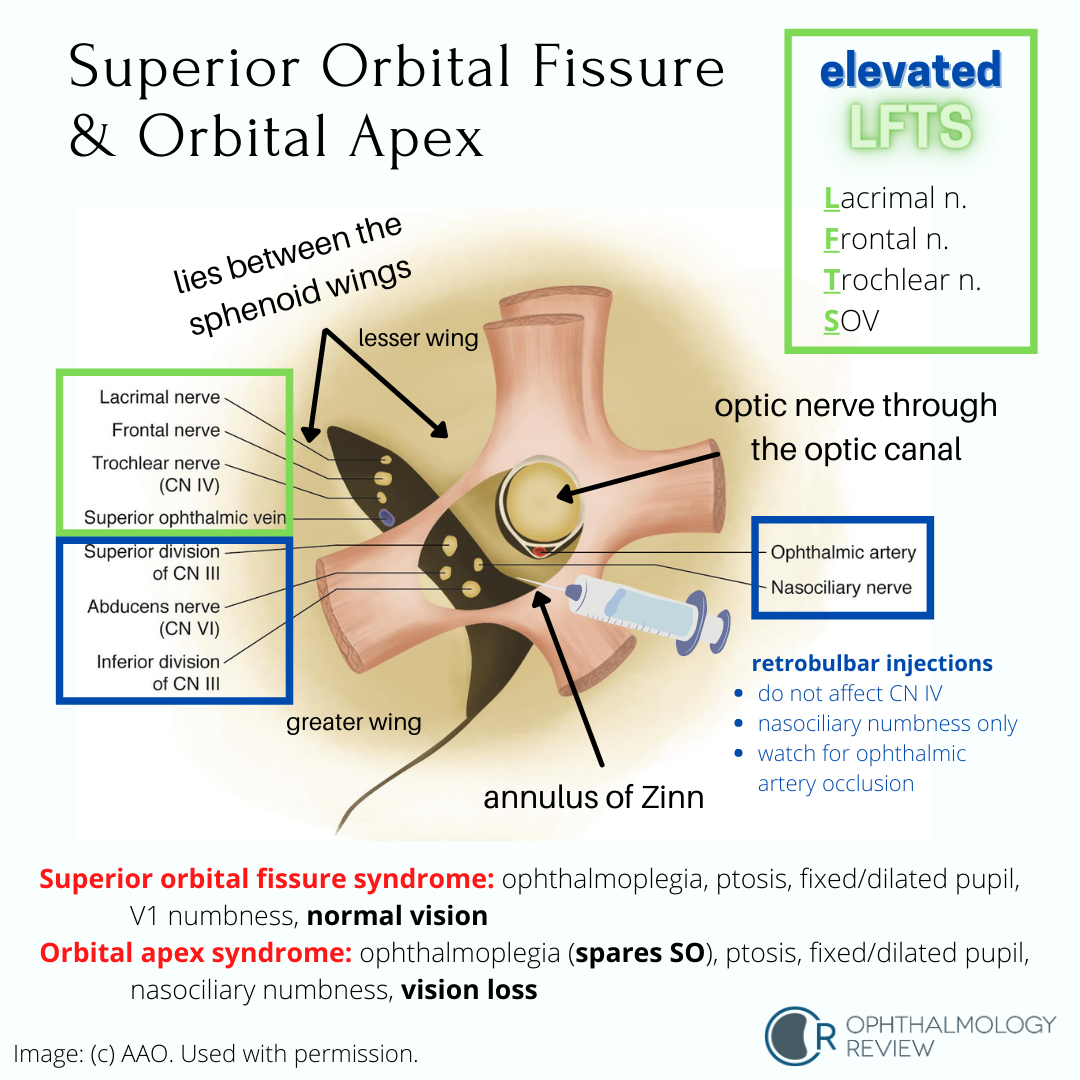Superior Orbital Fissure and Orbital Apex
Ophthalmology Basics Study Guide
I just released a new study guide for the "basics" of ophthalmology (anatomy, embryology, pharmacology, and principles of pathology) as part of my plan to format and release my notes from residency. It's been a slow process, but depending on the feedback and response I'll work on releasing study guides for other subjects within Ophthalmology!
Ciliary Ganglion
The ciliary ganglion serves as the site of synapse for the parasympathetic nerves innervating the eye. Because of the many nerves that course through it (not all of them synapse!) and its anatomical location, this structure is of importance in learning the basics of ophthalmology. According to the Basic and Clinical Science Course, it is located lateral to the ophthalmic artery, situated between optic nerve and lateral rectus muscle, approximately 1 cm (10 mm) anterior to the annulus of Zinn and 1.5-2 cm (15-20 mm) posterior to the globe (1-5).
Orbital Roof
The orbital roof separates the orbit from the anterior cranial fossa, which houses the frontal lobes of the brain. There are several structures and features regarding the orbital roof that we need to remember. While this article will try to list most of the important features of the orbital roof, it is by no means comprehensive.
Orbital Dimensions
Whitnall's Tubercle
The lateral orbital tubercle, or Whitnall's tubercle, is found on the zygomatic bone. According to the Basic and Clinical Science Course, it is typically around 11 mm inferior to the frontozygomatic suture (the junction between the frontal bone and zygomatic bone) (1), and sits 4-5 mm posterior to the lateral orbital rim around the midline (2).
Reading the BCSC: Fundamentals and Principles of Ophthalmology, Chapter 1
The BCSC Section 2, Fundamentals and Principles of Ophthalmology, provides an extremely detailed overview of the anatomy and physiology of the eye. Organizationally, it lays out the “fundamentals” of learning about the eye so that by the end of reading this book, you should be able to understand the anatomical structure of the eye, eye genetics, embryology, growth, and development, physiology of the eye, and medications that are used to treat eye conditions.
For this reason, this book is typically suggested as the first book to read for first-year ophthalmology residents. Please see the articles Reading The BCSC and OKAPs Reading Schedule to learn how to pace yourself through learning the material.


